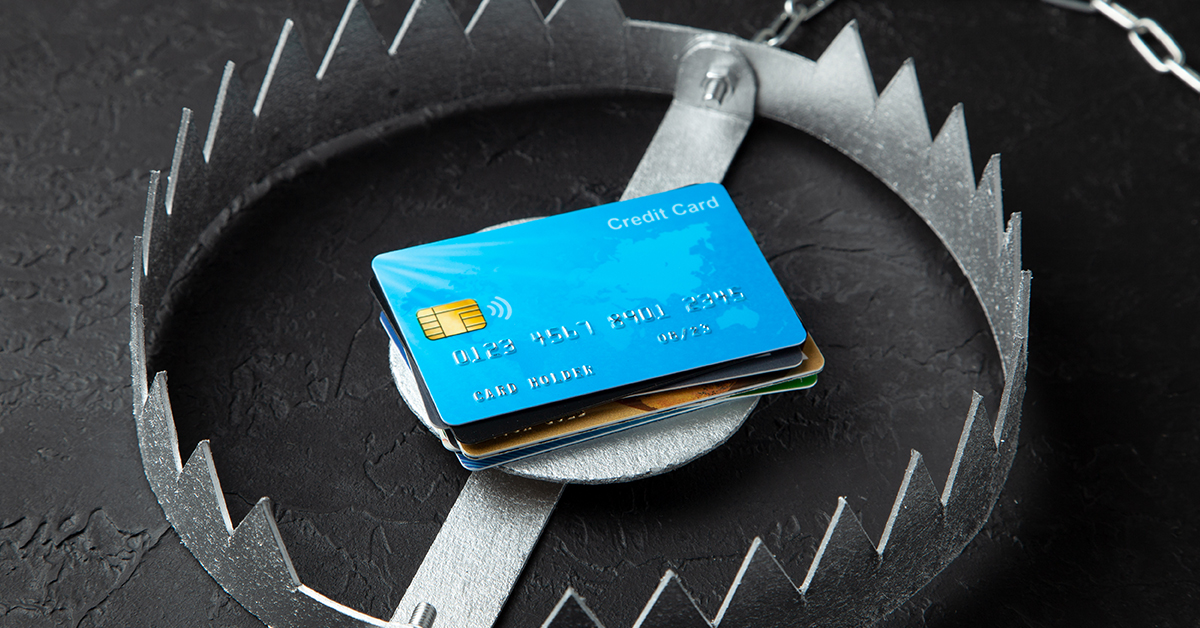Three steps to help you avoid the dangers of credit card debt
Credit cards offer the appeal of instant gratification and can help out when you’re short on cash—but you must use them with caution. Here are three steps to help ensure that the cards in your wallet serve as valuable tools, rather than potential sources of trouble.

1 Know how credit cards work
When you enroll for a credit card, you enter into a legal agreement with the financial institution that you’ll pay back any amount you charge on the card within a certain timeframe. If you pay back the full amount you owe—the balance—before the end of the monthly billing period, you generally won’t have to pay any interest on the money you’ve borrowed.
If you don’t pay the full amount, you’ll be charged interest on your purchase from the day it was made.
2 Understand the relationship between credit cards and credit scores
Credit cards and credit scores are tied together in a few important ways.
If your goal is to establish good credit, having a card and paying off your balance each month can be a great way to do it; however, if you’re not careful about making your payments on time, not only will you rack up interest and additional fees, you can easily damage your credit score.1
Your credit score is assigned by credit bureaus—the three predominant national credit bureaus are Experian, TransUnion, and Equifax. They track your financial and payment history and assign a score to your credit worthiness that other financial institutions use to decide whether they should offer you an auto loan or a what interest rate they should charge for your mortgage.
Another tie between credit cards and credit scores is in the way financial institutions decide how much interest they’ll charge you. The higher—better—your credit score, the lower the actual rate of interest you’ll pay.
How credit scores affect the interest rates credit users pay
As calculated and reported by the Consumer Finance Protection Bureau, the effective interest rate is a measure of how much interest is actually paid by consumers at each credit level.
| Credit score category | Effective interest rate |
| Deep subprime (579 or under) | 21.0% |
| Subprime (580–619) | 20.5% |
| Near prime (620–659) | 19.0% |
| Prime (660–719) | 16.5% |
| Super prime (720 or greater) | 13.5% |
| Overall | 15.6% |
Source: “The average credit card interest rate by credit score and card,” businessinsider.com, January 2021. The effective interest rates shown are drawn from 2018 data and were calculated by dividing the total amount of interest charged per year by the total balance at the end of each cycle.
3 Learn credit card terms
When is a credit card a good deal for you? These are the important features you’ll want to know about and compare.
APR—The interest rate on your credit card is also referred to as the annual percentage rate, or APR. If you purchase something using a credit card and fail to pay off the balance by the due date, you’ll be charged interest at that rate. You’ll want to make note of any change to your credit card’s APR, as that will affect the amount of interest you’ll pay on outstanding balances. APRs vary among the credit cards, so do your homework and compare APRs before you sign up for a card.
Fees—In addition to charging interest, most credit cards have fees such as an annual fee for simply having the card. This fee is like a membership fee and is typically charged once per year for as long as you’re a cardholder. Before you choose a card, compare interest rates and fees.
Rewards—Credit cards may offer you cash or points that can be applied toward benefits such as travel or merchandise. Many financial institutions will use rewards to encourage consumers to choose their credit cards. Compare reward programs, as well as fees and interest rates, to choose the right card for your lifestyle.
Finance charges or late fees—If you’re late making a payment or if you only pay part of the balance, you may be charged an additional fee. You may also incur a charge for a balance transfer.
Credit limit—This is the predetermined limit that you can charge to your credit card. If you establish a track record of responsible usage and timely payments, the financial institution may increase your credit limit. If you exceed the credit limit, you may be penalized.
Avoid trouble by knowing the pros and cons of credit cards
Credit cards are easy to use, can be safer than carrying cash, and sometimes offer consumer protection on certain purchases. At the same time, they may carry high interest rates and additional fees. So if you’re considering a credit card—or you already have one—make sure you use it with caution. And, of course, be realistic: If you don’t have the money for your purchase today, how likely is it that you’ll have it next month?
Consider starting small. Purchase small items with your credit card, and pay off the full balance every month. This will help you create healthy habits and a good credit score while you build greater confidence in meeting both your short- and long-term goals.
1 “How to Build Credit With Credit Cards: The Definitive Guide,” creditcardinsider.com, June 2020.
The content of this document is for general information only and is believed to be accurate and reliable as of the posting date, but may be subject to change. It is not intended to provide investment, tax, plan design, or legal advice (unless otherwise indicated). Please consult your own independent advisor as to any investment, tax, or legal statements made herein.
MGR0203211504926


